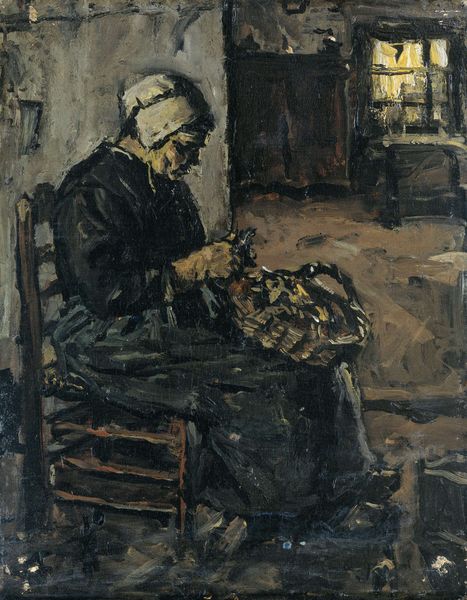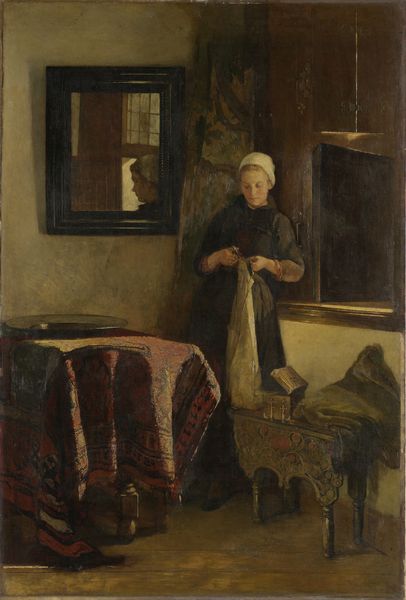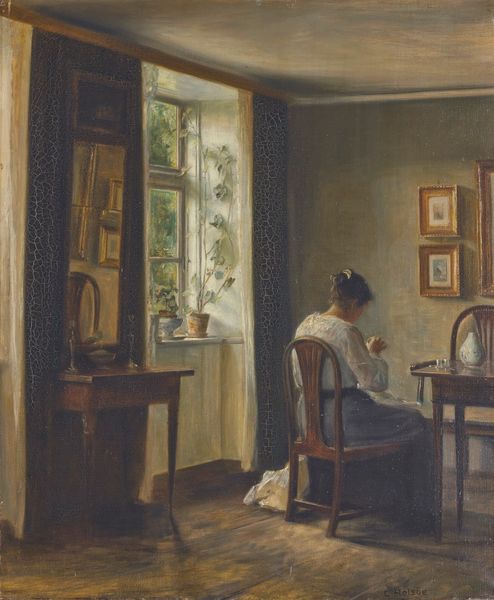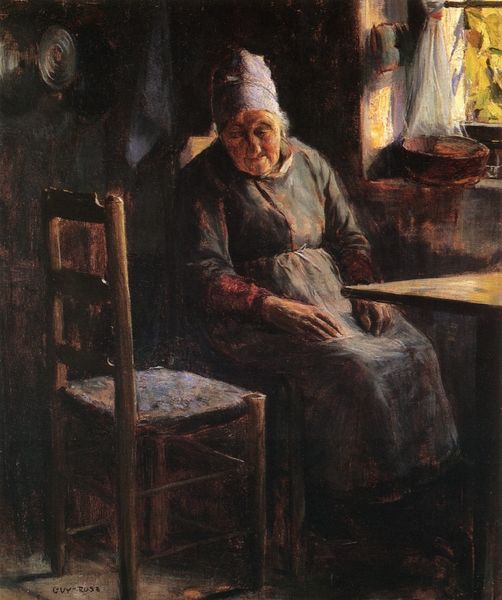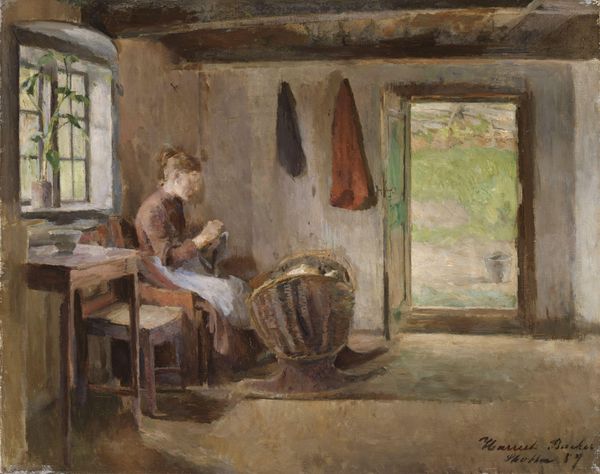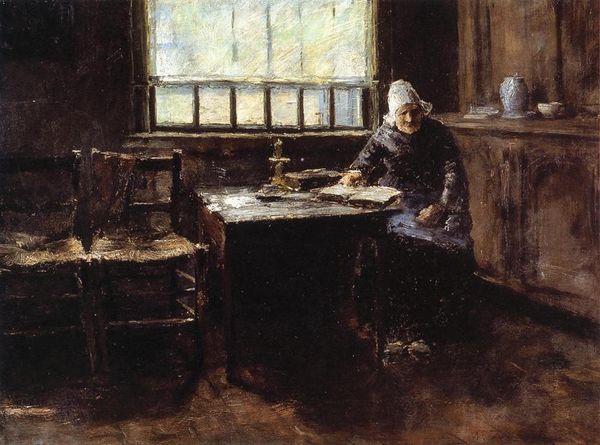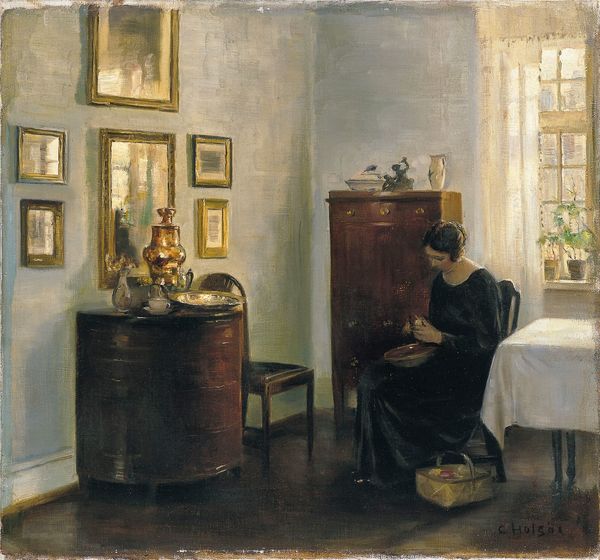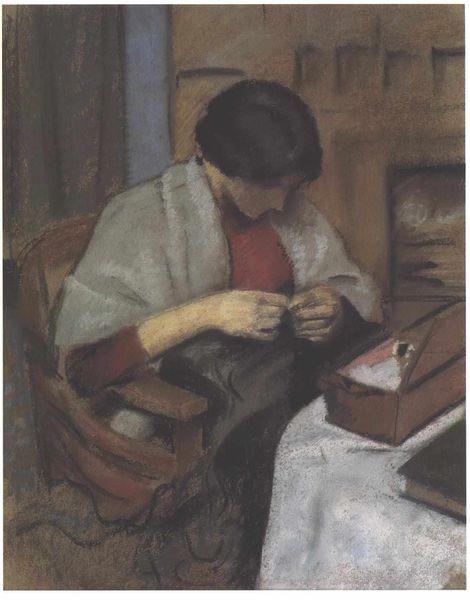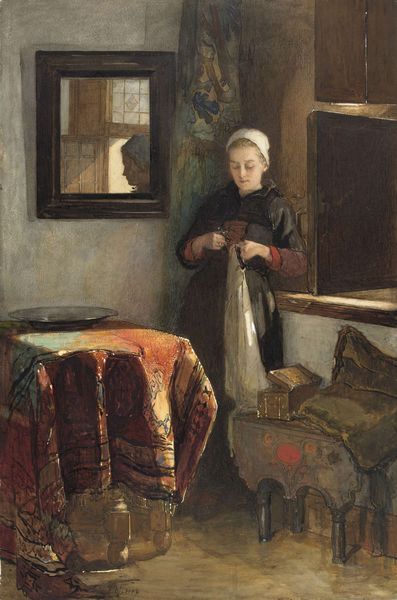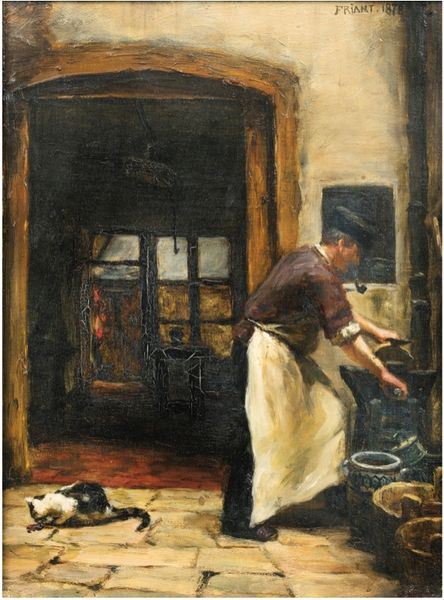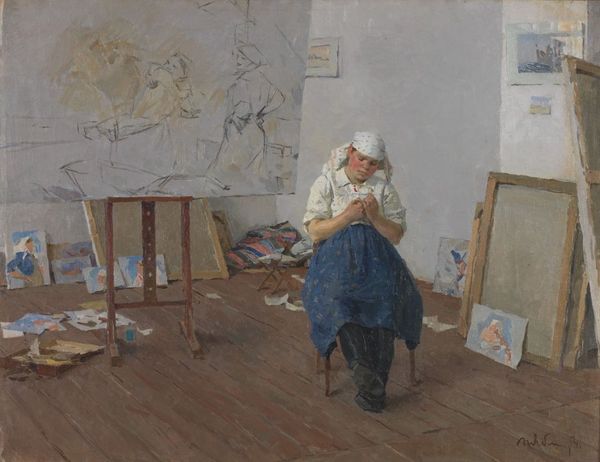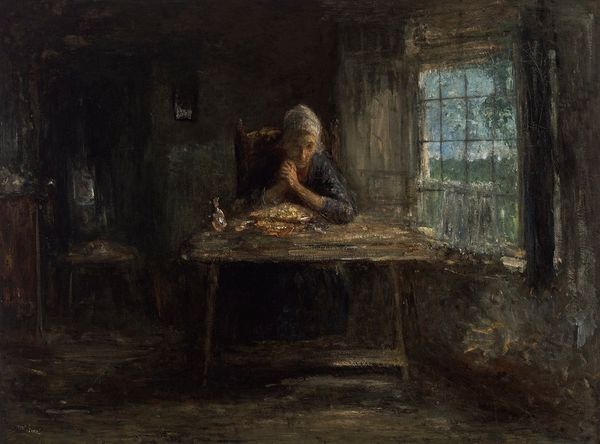
#
furniture
#
charcoal drawing
#
possibly oil pastel
#
oil painting
#
acrylic on canvas
#
earthy tone
#
underpainting
#
painting painterly
#
watercolour illustration
#
watercolor
#
warm toned green
Copyright: Public domain
Curator: Georg Pauli painted "The Lacemaker" in 1885, and it strikes me immediately with its subdued, earthy tones and soft brushstrokes. There's a quiet intensity emanating from the woman depicted. Editor: Indeed. Look at how the light illuminates her hands, the very tools of her trade, but throws everything else into shadow. I can't help but wonder about the labor that’s literally in her hands and the potential societal marginalization she experienced because of gender and possibly economic status. The lacemaking would have likely been part of her economic survival. Curator: The painting’s texture feels palpable. From the smooth finish of the wooden table to the delicate threads she's manipulating. I'm thinking about the production and the making of art that traditionally divides high art and craft and how this piece complicates these notions, the repetitive motion required, and how that labor itself imbues meaning into the final product. Editor: Right. Lacemaking wasn’t merely a skill, but often the main or sole income for many women, and that’s work we typically devalue. What was the reality of their wages, what agency did they have within this meticulous labor? This painting can be used as a lens for a closer examination of intersectional inequalities in the artworld and society at large during that period. Curator: And this intersection—textiles, painting, a woman’s labor– speaks to different tiers of craftsmanship. The flowers on the window sills, contrasting against the woman. We understand more how he might have seen the woman in terms of process: careful and painstaking, and requiring tremendous skills to perform correctly. The craft demands specific skill sets for precise actions in material transformation. Editor: The juxtaposition of the intricate lace and the potted plants could symbolize themes of domesticity and confinement too. Were these women trapped in these roles? Art historical pieces like these allow for broader, necessary intersectional discourses related to social identity. It makes one ponder who got to make art for arts’ sake versus art for basic survival. Curator: Pauli, with the earthy colour choices and brushwork creates a beautiful scene that captures craft and labour so thoughtfully, and perhaps this artwork shows Pauli trying to merge art and material practice. Editor: Absolutely, and seeing it through the perspective of the depicted woman’s role at the time invites discussions on broader aspects regarding work and gender.
Comments
No comments
Be the first to comment and join the conversation on the ultimate creative platform.
